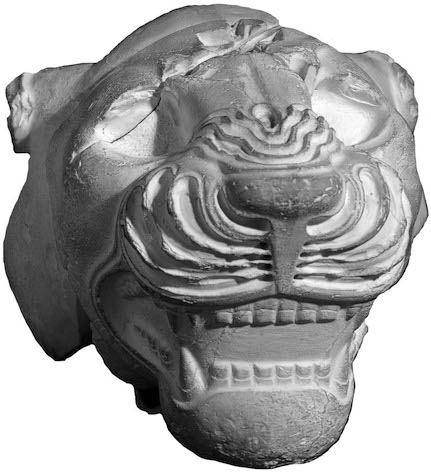- Home
- Explore RINAP Home Page
- Browse Online Corpus
- Access RINAP 3 Scores
- Access RINAP 3 Sources
- RINAP 3/1 Front Matter
- RINAP 3/1 Introduction
- RINAP 3/1 Text Introductions
- RINAP 3/1 Back Matter
- RINAP 3/2 Front Matter
- RINAP 3/2 Introduction
- RINAP 3/2 Text Introductions
- RINAP 3/2 Back Matter
- Oracc Lemmatization Colors
- Citing RINAP URLs
- Reusing RINAP material
- RINAP Downloads
Babylonia
232 [/rinap/rinap3/Q004037/]
Several paving stones of breccia from Babylon are inscribed with a text giving Sennacherib's name and his title "king of Assyria." Since he had Babylon destroyed after he captured it in 689, the inscription probably dates to his first reign over Babylonia (704–703) or when his vassal Bēl-ibni or his son Aššur-nādin-šumi sat on the throne of Babylon (702–694); Babylon is reported to have been "kingless" from 688–681.
Access Sennacherib 232 [/rinap/rinap3/Q004037/]
Source:
Commentary
Some or all of the paving stones were reused and reinscribed by the Neo-Babylonian ruler Nebuchadnezzar II. R. Koldewey refers to one exemplar discovered on 28 July, 1900 in Amran, and he and Unger refer to inscribed paving stones from the processional way in the court leading to the main eastern gate in the enclosure wall of the ziggurrat precinct. No excavation or museum numbers are known for any of these paving stones, and no excavation photographs were taken. Therefore, the edition here is based on Koldewey's published copy (Pflastersteine pl. 4 v).

BM 91678 (text no. 233), a stone lion-head finial from Sippar (or Nineveh) bearing an inscription of Sennacherib on its neck stating that he gave this object to Esarhaddon.
Bibliography
233 [/rinap/rinap3/Q004038/]
A small stone lion-head finial from Sippar (or Nineveh) is inscribed with a one-line inscription of Sennacherib. The text states that Sennacherib gave the object to Esarhaddon. Since Esarhaddon appears to be referred to as "senior-ranking son," the object was probably commissioned after his official nomination as heir designate.
Access Sennacherib 233 [/rinap/rinap3/Q004038/]
Source:
Commentary
The lion head is presumably a finial as suggested by the fact that it has been hollowed out, with its interior surface rounded and smoothed. The inlays from the eyes and forehead are missing. The inscription runs along the edge of the left side of the lion's face, under the jaw, and then on the edge of the other side of the face. Someone attempted to carefully erase Sennacherib's name without damaging the piece or drawing attention to the erasure; see Frahm, Sanherib pl. VII. The provenance of the piece is not entirely certain. As indicated by its registration number (AH 82-7-14,4464), BM 91678 is registered as coming from Abu Habba, ancient Sippar. However, J. Reade (in Searight, Assyrian Stone Vessels p. 104 no. 650) suggests that Nineveh is a more probable provenance since Abu Habba provenances have been assigned to objects that seem more likely to have originated from northern Iraq. He speculates that this was because those objects may have been placed on display shortly after arriving in the British Museum from the Museum's concurrent excavations at Babylon, Nineveh, Sippar, and other sites and, as a result, their original find spots were forgotten before they were registered (ibid. p. 11 no. 10).
Bibliography
A. Kirk Grayson & Jamie Novotny
A. Kirk Grayson & Jamie Novotny, 'Babylonia', RINAP 3: Sennacherib, The RINAP 3 sub-project of the RINAP Project, 2025 [http://oracc.org/rinap/rinap3/RINAP32TextIntroductions/Babylonia/]